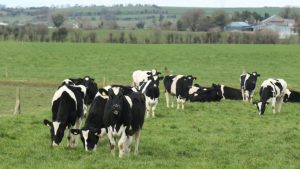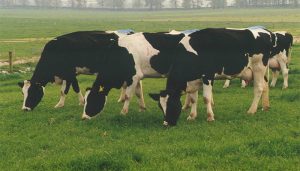
That’s according to Co. Kerry man Prof. John Roche, who is the chief scientific advisor in New Zealand’s Ministry of Primary Industries.
Prof. Roche was one of the speakers at the 2022 Agricultural Science Association (ASA) Conference, which took place in Kilkenny today (Thursday, September 8).
Prof. Roche said the amount of food that needs to be produced to feed the world is an “extraordinary challenge”. However, he warned that the world is failing to do this at present.
“For the first time in almost 50 years, we are starting to see world hunger grow again, and this predates Covid-19. It wasn’t just the Covid-19 effect, and of course it’s being exacerbated by events in eastern Europe,” he said.
However, meeting the demand for food will come up across a major challenge, namely the lack of land.
“For the first time in human history there is no more land. Up until the green revolution, we increased our food production – yes, through better agronomic techniques and better breeding, but there was always more land,” Prof. Roche added.
“In fact, we’re probably using too much land. We have to retire some of it.”
Water is facing a similar challenge, Prof. Roche highlighted.
“Water is fast becoming a scarce resource. In countries where we have a lot of water we tend to underestimate the value of it,” he said, drawing parallels between New Zealand and Ireland here.
“[In New Zealand] we are seeing a massive shift in our rainfall patterns, at the same time as we are seeing the world warm up. We’re sucking more water out of the country, and rainfall is not coming down.”
Notwithstanding this, Prof. Roche also highlighted another parrallel between Ireland and New Zealand – the nutritional value of the food produced in both countries.
“The best piece of nutritional advice I was ever given was to stick to the outside aisles of the supermarket, stay away from the inside aisles. We – New Zealand and Ireland – produce the outside aisles of the supermarket. It’s a huge badge of honour that we should wear with pride,” he said.
It is for that reason, Prof. Roche remarked, that it is “really off-putting” and to see farmers “disconnected and lacking in hope”.
“We need to bring hope back up the farm driveway,” he said.
Addressing the current state of play for New Zealand’s agriculture sector, Prof. Roche noted that the country requires 30% less feed to produce a kilogram of milk solids than it did 40 years ago, while greenhouse gas (GHG) emissions have decreased by 40% per litre of milk produced in the same period.
However, due to the doubling of the size of New Zealand’s dairy sector in the last 40 years, the overall GHG footprint of the country’s dairy sector has increased by 120% in that time.
Despite that, New Zealand has taken the approach of separating biogenic methane from other GHGs.
“We adopted a split gas approach. We listened to the science. Biogenic methane is very different from fossil methane and it’s very different to carbon dioxide and nitrous oxide,” Prof. Roche remarked.
Water quality is also an issue of concern in New Zealand, and the country has plans in place to stop further degradation in waterways that are degraded and return them to a healthy state.
“We [farmers] can’t just say ‘the world depends on us, leave us alone’. The world does depend on us, but it also depends on us to lead.
“We produce highly-efficient sustainable food, but the world now needs us to lead again,” Prof. Roche stressed.

























